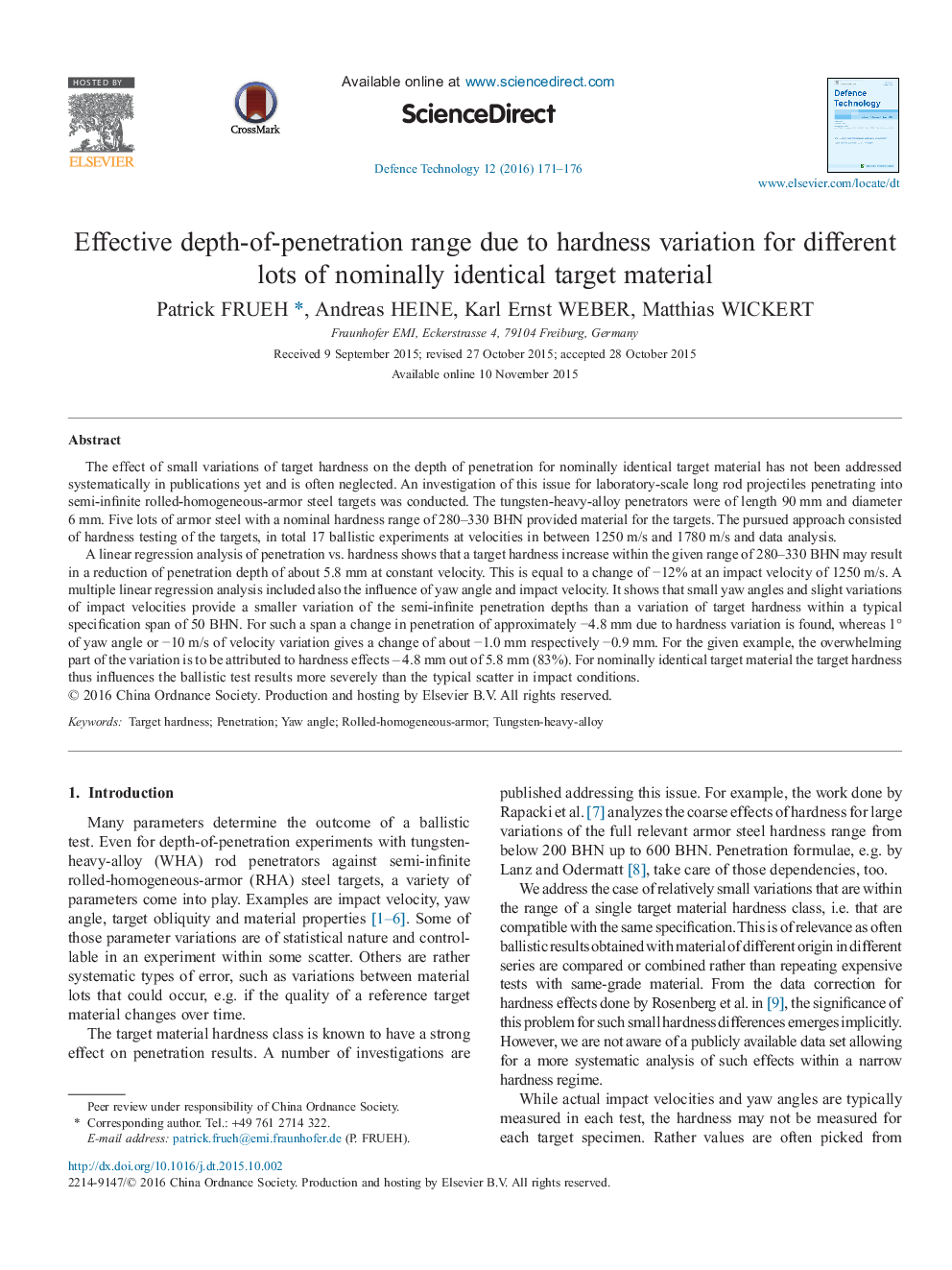| کد مقاله | کد نشریه | سال انتشار | مقاله انگلیسی | نسخه تمام متن |
|---|---|---|---|---|
| 759456 | 896478 | 2016 | 6 صفحه PDF | دانلود رایگان |
The effect of small variations of target hardness on the depth of penetration for nominally identical target material has not been addressed systematically in publications yet and is often neglected. An investigation of this issue for laboratory-scale long rod projectiles penetrating into semi-infinite rolled-homogeneous-armor steel targets was conducted. The tungsten-heavy-alloy penetrators were of length 90 mm and diameter 6 mm. Five lots of armor steel with a nominal hardness range of 280–330 BHN provided material for the targets. The pursued approach consisted of hardness testing of the targets, in total 17 ballistic experiments at velocities in between 1250 m/s and 1780 m/s and data analysis.A linear regression analysis of penetration vs. hardness shows that a target hardness increase within the given range of 280–330 BHN may result in a reduction of penetration depth of about 5.8 mm at constant velocity. This is equal to a change of −12% at an impact velocity of 1250 m/s. A multiple linear regression analysis included also the influence of yaw angle and impact velocity. It shows that small yaw angles and slight variations of impact velocities provide a smaller variation of the semi-infinite penetration depths than a variation of target hardness within a typical specification span of 50 BHN. For such a span a change in penetration of approximately −4.8 mm due to hardness variation is found, whereas 1° of yaw angle or −10 m/s of velocity variation gives a change of about −1.0 mm respectively −0.9 mm. For the given example, the overwhelming part of the variation is to be attributed to hardness effects – 4.8 mm out of 5.8 mm (83%). For nominally identical target material the target hardness thus influences the ballistic test results more severely than the typical scatter in impact conditions.
Journal: Defence Technology - Volume 12, Issue 2, April 2016, Pages 171–176
